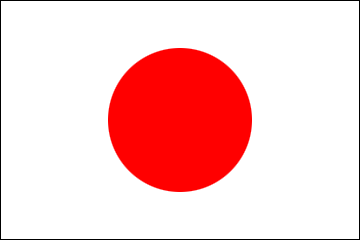Article by Warren Waxer, President of the Jasper-Yellowhead Historical Society: Mt. Alberta
2023/12/28
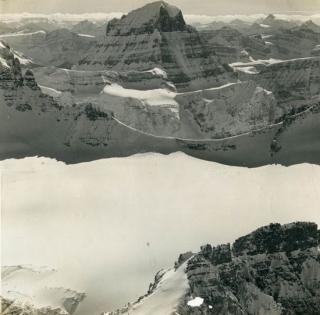 Jasper-Yellowhead Museum & Archives, PA 7/26
Jasper-Yellowhead Museum & Archives, PA 7/26
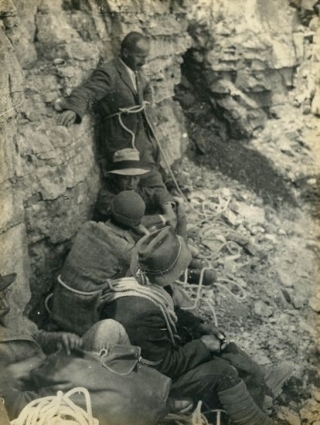 Jasper-Yellowhead Museum & Archives, PA 7/26
Jasper-Yellowhead Museum & Archives, PA 7/26
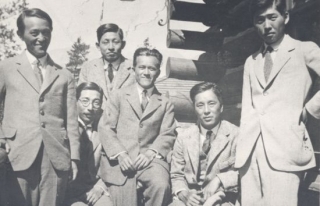 Jasper-Yellowhead Museum & Archives, PA 7/26
Jasper-Yellowhead Museum & Archives, PA 7/26
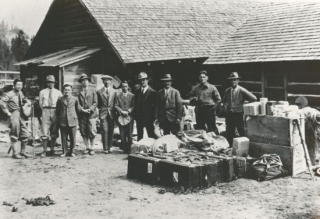 Jasper-Yellowhead Museum & Archives, PA 7/26
Jasper-Yellowhead Museum & Archives, PA 7/26
It was a picture of Mt. Alberta in a 1921 climbing guidebook with the caption “A formidable unclimbed peak” that caught the attention of a few Japanese adventurers. Marquis Mori Tatso Hosokawa saw the picture while on a ski trip with his close friend Crown Prince Michi and his aide-de-camp, ski-guide, and accomplished climber, Yuko Maki. He was so moved by the image that he suggested that this would be a worthy expedition for a Japanese team. Maki soon assembled a team of 5 prominent members of the Ski Club of Japan.
In July 1925 the team docked at Vancouver and proceeded by rail to Jasper. Yuko Maki, Masanobu Hatano, Seiichi Hashimoto, Nagakazu Okabe, Yukio Mita and Tanezo Hayakawa were met by outfitter Fred Brewster and three Swiss climbing guides. Brewster supplied 39 horses to haul supplies to the base of the mountain for the month-long expedition.
The mountain had remained unclimbed because of its difficulty. At 3619m (11,874ft) Mt. Alberta is the 5th highest peak in the Winston Churchill Range. The Japanese team were tested every step of the way and impressed the Swiss guides with their physical and mental fitness. One guide remarked “anyone who was not mentally very well balanced … would have difficulty facing these airy heights. The Japanese did all this as if it were their daily work” even employing the unconventional “human ladder” technique to overcome a 5m overhang.
On July 21st 7:30PM, after 16 hours of climbing the 9-man team stood on the summit, elated and exhausted. Maki noted, “not a word was spoken, but doubtless everyone felt victorious. There were no banzais or bravos”.
The team hastily constructed a rock summit cairn housing a tomato tin holding the expedition’s details. They then ceremoniously planted the monogrammed ice axe, the Marquis had given to them, in the centre. After spending an uncomfortable night on a ledge just below the summit, the team began the 15 hour down-climb to their base camp for a three-day rest.
With weather deteriorating, the team returned to Jasper ending the 25-day expedition. The Japanese team took the first train to Vancouver for an ocean voyage to Japan. The Swiss guides finished the summer climbing season in Jasper before returning to Switzerland.
Word of this remarkable first ascent spread around the climbing world but that might have been the end of the story if it wasn’t for the ice axe left on the summit. Through storytelling and possibly a bit of mischief, the summit ice axe, given by patron Marquis Mori Tatsu Hosokawa, became a gift from Crown Prince Michi and miraculously turned to pure silver.
When Prince Michi ascended to the throne as Emperor Hirohito a year later the story took on a life of its own, attracting groups to this imposing and remote mountain.
The next climbers to summit were Americans Fred Ayers and John Oberlin who were told to bring silver polish. On July 28, 1948, following the Japanese route to the summit where they yelled in joy “the axe, the axe!”. Digging down through the snow it became apparent this was not a silver axe but a standard Swiss-made axe. While they didn’t know the significance of the initials MTH they thought the axe should be removed and preserved. As well, because Ayer needed to sacrifice his ice axe as an anchor at a particularly difficult notch, they could use the axe on the descent. The ice axe was well-frozen into ice and rock and the pair broke the shaft just above the ferrule. Three quarters of an axe was better than none.
They also retrieved the summit register, a piece of weathered paper in a tomato tin. Along with the names of the climbers of the 1925 team was the simple phrase “We came from Japan so far called by this great charming mountain.”
The summit axe languished in a back office in the headquarters of the American Alpine Club for the next 44 years until 1992 when it came to the attention of Jasper Park Warden Greg Horne. After much lobbying and pleading by Greg and Edith Gourley, Historian for the Jasper-Yellowhead Historical Society, the top half of the axe was sent to Jasper.
On the 40th anniversary of the original climb the Nagano High School Boys Alpine Club came to the Rockies to repeat the climb. They were successful and retrieved the base of the ice axe from the cairn. For the 1997 AGM of the Japanese Alpine Club (JAC), a Canadian delegation was invited to bring the top portion and for the first time in 72 years the axe was made whole.
A similar ceremony was held in Canada in 2000 on the 75th anniversary of the climb. It was a grand affair with dignitaries from the Japanese and Canadian government, the JAC and the Alpine Club of Canada (ACC). As well, close to 100 trekkers came from Japan to participate in various guided hikes throughout the Western mountains.
The two pieces of the original axe and a replica gift axe now proudly reside on display at the Jasper Museum. As well, artifacts and photo albums donated by Junko Haga (climber Yukio Mita’s daughter) have given the display depth and context.
Of the exhibit JAC President Atsuo Saito proclaimed, “It is said that the ice axe represents the soul of a climber. This ice axe symbolizes the history and tradition of the climbing of Mt. Alberta and is going to be exhibited here forever”.
About the 75th anniversary celebration and meeting of the JAC and ACC he commented, “I strongly hope that the two clubs will cement their everlasting friendship through this historic event and cherish it forever. I believe this is the responsibility for us who have inherited the great tradition left by our predecessors.”
In 1925 Yuko Maki and his intrepid team started something and today the relationship of the Japanese and Canadian Alpine Clubs remains strong as we approach the 100th anniversary of this defining event.
Warren Waxer- President
Jasper-Yellowhead Historical Society
In July 1925 the team docked at Vancouver and proceeded by rail to Jasper. Yuko Maki, Masanobu Hatano, Seiichi Hashimoto, Nagakazu Okabe, Yukio Mita and Tanezo Hayakawa were met by outfitter Fred Brewster and three Swiss climbing guides. Brewster supplied 39 horses to haul supplies to the base of the mountain for the month-long expedition.
The mountain had remained unclimbed because of its difficulty. At 3619m (11,874ft) Mt. Alberta is the 5th highest peak in the Winston Churchill Range. The Japanese team were tested every step of the way and impressed the Swiss guides with their physical and mental fitness. One guide remarked “anyone who was not mentally very well balanced … would have difficulty facing these airy heights. The Japanese did all this as if it were their daily work” even employing the unconventional “human ladder” technique to overcome a 5m overhang.
On July 21st 7:30PM, after 16 hours of climbing the 9-man team stood on the summit, elated and exhausted. Maki noted, “not a word was spoken, but doubtless everyone felt victorious. There were no banzais or bravos”.
The team hastily constructed a rock summit cairn housing a tomato tin holding the expedition’s details. They then ceremoniously planted the monogrammed ice axe, the Marquis had given to them, in the centre. After spending an uncomfortable night on a ledge just below the summit, the team began the 15 hour down-climb to their base camp for a three-day rest.
With weather deteriorating, the team returned to Jasper ending the 25-day expedition. The Japanese team took the first train to Vancouver for an ocean voyage to Japan. The Swiss guides finished the summer climbing season in Jasper before returning to Switzerland.
Word of this remarkable first ascent spread around the climbing world but that might have been the end of the story if it wasn’t for the ice axe left on the summit. Through storytelling and possibly a bit of mischief, the summit ice axe, given by patron Marquis Mori Tatsu Hosokawa, became a gift from Crown Prince Michi and miraculously turned to pure silver.
When Prince Michi ascended to the throne as Emperor Hirohito a year later the story took on a life of its own, attracting groups to this imposing and remote mountain.
The next climbers to summit were Americans Fred Ayers and John Oberlin who were told to bring silver polish. On July 28, 1948, following the Japanese route to the summit where they yelled in joy “the axe, the axe!”. Digging down through the snow it became apparent this was not a silver axe but a standard Swiss-made axe. While they didn’t know the significance of the initials MTH they thought the axe should be removed and preserved. As well, because Ayer needed to sacrifice his ice axe as an anchor at a particularly difficult notch, they could use the axe on the descent. The ice axe was well-frozen into ice and rock and the pair broke the shaft just above the ferrule. Three quarters of an axe was better than none.
They also retrieved the summit register, a piece of weathered paper in a tomato tin. Along with the names of the climbers of the 1925 team was the simple phrase “We came from Japan so far called by this great charming mountain.”
The summit axe languished in a back office in the headquarters of the American Alpine Club for the next 44 years until 1992 when it came to the attention of Jasper Park Warden Greg Horne. After much lobbying and pleading by Greg and Edith Gourley, Historian for the Jasper-Yellowhead Historical Society, the top half of the axe was sent to Jasper.
On the 40th anniversary of the original climb the Nagano High School Boys Alpine Club came to the Rockies to repeat the climb. They were successful and retrieved the base of the ice axe from the cairn. For the 1997 AGM of the Japanese Alpine Club (JAC), a Canadian delegation was invited to bring the top portion and for the first time in 72 years the axe was made whole.
A similar ceremony was held in Canada in 2000 on the 75th anniversary of the climb. It was a grand affair with dignitaries from the Japanese and Canadian government, the JAC and the Alpine Club of Canada (ACC). As well, close to 100 trekkers came from Japan to participate in various guided hikes throughout the Western mountains.
The two pieces of the original axe and a replica gift axe now proudly reside on display at the Jasper Museum. As well, artifacts and photo albums donated by Junko Haga (climber Yukio Mita’s daughter) have given the display depth and context.
Of the exhibit JAC President Atsuo Saito proclaimed, “It is said that the ice axe represents the soul of a climber. This ice axe symbolizes the history and tradition of the climbing of Mt. Alberta and is going to be exhibited here forever”.
About the 75th anniversary celebration and meeting of the JAC and ACC he commented, “I strongly hope that the two clubs will cement their everlasting friendship through this historic event and cherish it forever. I believe this is the responsibility for us who have inherited the great tradition left by our predecessors.”
In 1925 Yuko Maki and his intrepid team started something and today the relationship of the Japanese and Canadian Alpine Clubs remains strong as we approach the 100th anniversary of this defining event.
Warren Waxer- President
Jasper-Yellowhead Historical Society
